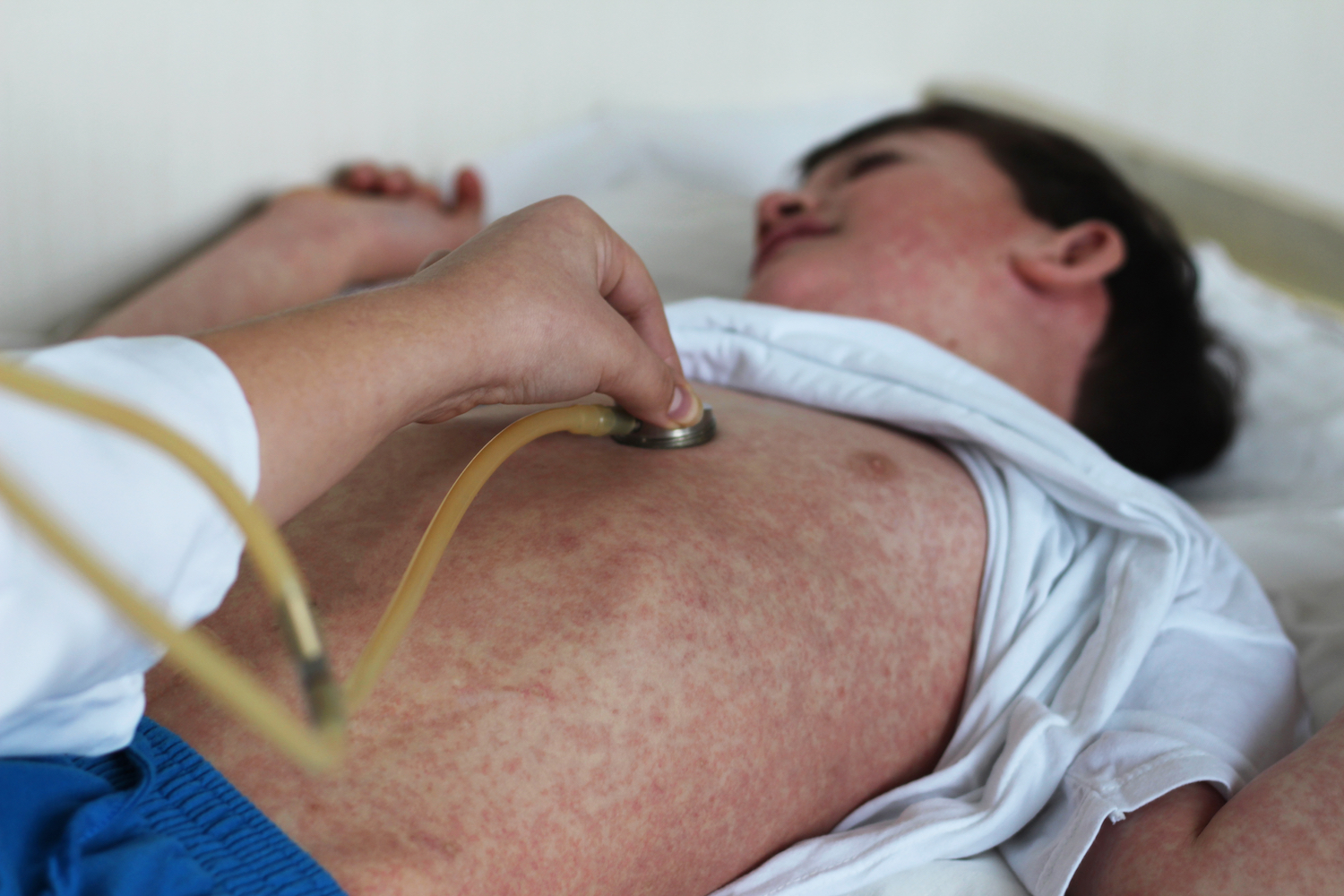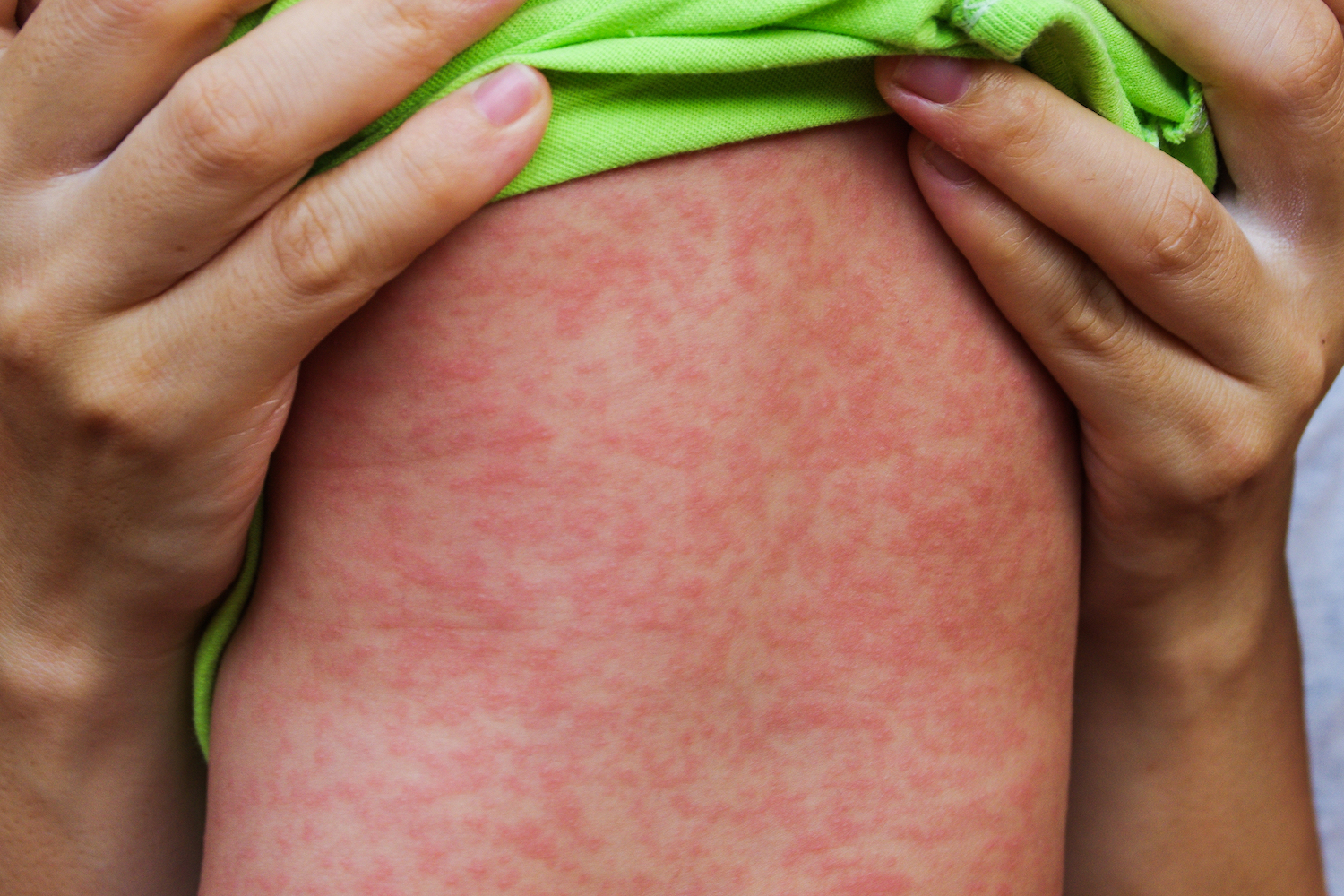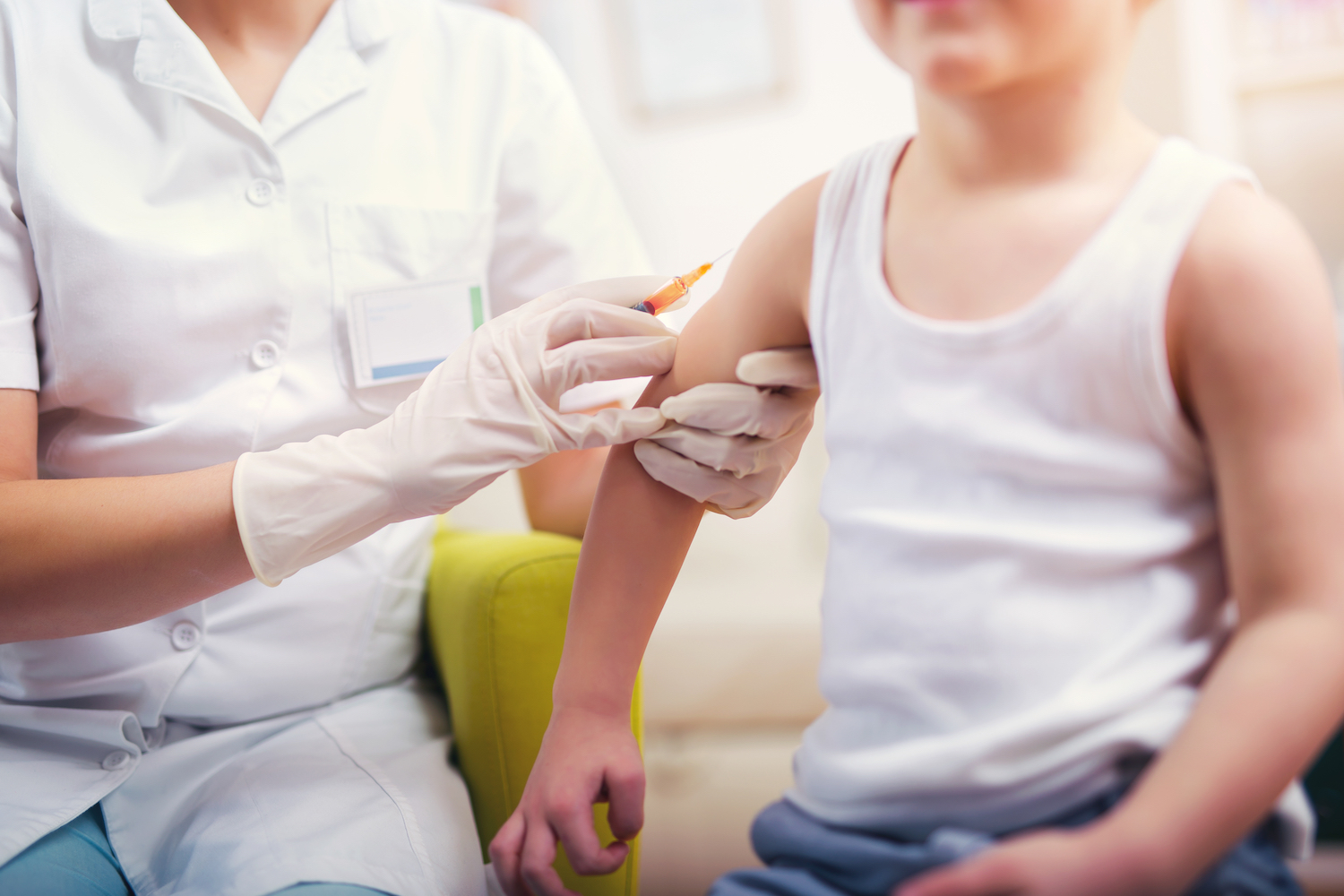Measles: Symptoms, Treatment and Vaccination

Measles, also called rubeola, is a viral infection that's one of the most contagious infectious diseases in the world. The disease is marked by symptoms that are similar to a common cold, as well as a characteristic red rash. Between 2000 and 2010, the global incidence of measles decreased by 66% and the mortality caused by the disease decreased 74%, according to a report published in the journal The Lancet. Less than two decades ago, measles was almost wiped out in the United States, thanks to vaccines.
But recently, the virus has had a resurgence. Globally, the number of cases has jumped 30% due to vaccine hesitancy. More than 760 cases of measles were reported in the U.S. between Jan. 1 and May 3, 2019, according to Dr. Deepa Mukundan, a pediatric infectious diseases specialist at the University of Toledo Medical Center in Ohio. This is up from 372 cases over the entire year in 2018 and up from 120 cases over the entire year in 2017, according to the Centers for Disease Control and Prevention (CDC).
How contagious is it?
Measles is caused by Measles morbillivirus, a virus in the paramyxoviridae family. According to the CDC, the measles virus settles in the nose and throat mucus of an infected person. When a person infected with the virus coughs, sneezes or exhales, the virus becomes airborne and can spread to other people.
"The virus can remain in the air for significant periods of time," Mukundan told Live Science. "One can get the measles just by being in a room where a person with measles has been, even up to 2 hours after that person has left."
Indeed, the virus is incredibly contagious — 90% of people who are not vaccinated against measles will become infected if they share space with someone who has the virus.
"Another reason that it is transmitted so effectively is because the hallmark of measles, the rash, only comes several days after someone is contagious," said Dr. Jennifer Lighter, a pediatric infectious disease specialist at New York University Langone Health. Therefore, infected individuals can spread the virus for several days before realizing they're ill. The contagious period lasts about four days before and four days after the rash appears.
A person with measles is likely to infect between 5 and 18 unvaccinated people, according to a 2019 review published in the journal Emerging Infectious Diseases.
Get the world’s most fascinating discoveries delivered straight to your inbox.
Symptoms and diagnosis
Most cases of measles cause some combination of cough, runny nose, red eyes, high fever and tiny white to bluish spots in the mouth, said Dr. Aileen M. Marty, a professor of infectious diseases at Florida International University's Herbert Wertheim College of Medicine in Miami. As the infection progresses, the characteristic red rash will develop. The rash typically looks like large, red, flat splotches on the skin.
To test for measles, a doctor will examine the patient for telltale symptoms, such as spots inside of the mouth and the skin rash. If the doctor has any doubt, they may order a blood test to confirm infection, according to the Mayo Clinic.
Treatment and recovery
Almost all cases require treatment by a doctor. "This is a disease where complications are common — complications such as ear infection (acute otitis media), diarrhea and dehydration, pneumonia, encephalitis and even death," Marty told Live Science. "In the United States, one to three of every 1,000 infected persons will die from [measles] complications — which is better than in the Third World, where as many as two to 15 per 100 infected persons die from measles and its complications."
Young children are much more susceptible to the virus. According to the Mayo Clinic, measles kills 100,000 people a year, most under the age of 5. Pregnant women and those with a compromised immune system are also at risk of severe complications.
There is no specific drug for treating measles. Instead, doctors treat the symptoms. "This means we provide/advise hydration, antipyretics (e.g., acetaminophen) for comfort and fever control, airway humidification in patients with respiratory tract involvement," Marty said. Though not licensed in the United States for the treatment of measles, some pediatricians have used Ribavirin, an antiviral medication, to treat severe pneumonia caused by measles, Marty added.
To protect those who have been exposed to the virus but have not been vaccinated, a doctor may order a post-exposure vaccination. If given within 72 hours of exposure, the vaccination may prevent the measles. Even if it doesn't prevent the disease, the vaccinated patient will only have a mild case of the measles, according to the Mayo Clinic. Another way to protect at-risk individuals is to inject them with immune serum globulin (antibodies or proteins derived from the blood of donors with measles immunity) within six days of exposure to the virus. Like a vaccination, this treatment can prevent measles or make the onset less severe.
For many people, recovering from the measles includes resting at home until the symptoms subside. It is important for patients to drink plenty of fluids to replace fluids lost during fevers. It may also be helpful to use a humidifier to relieve congestion and to block out bright lights that may bother sensitive eyes, according to the Mayo Clinic. Once the disease has run its course, the person will be immune to the virus.
However, the immune system may be significantly weakened for up to 2 years after recovering from the measles, according to Lighter. During this time, people can be more susceptible to secondary viral and bacterial infections, which may cause more complications than the original measles infection.
The measles vaccine
The best way to prevent measles is by vaccination. The CDC recommends 2 doses of the vaccine; the first for those between 12 and 15 months of age and the second for children between 4 and 6 years of age. The vaccine is 97% effective for those who receive both doses and about 93% effective for those receiving one.
Getting the proper vaccinations not only protects the individual receiving the vaccine, it also protects those who cannot be vaccinated: those allergic to components of the vaccine, those with a compromised immune system or those too young to receive the vaccine.
"Vaccines are one of the most effective tools we have to protect public health and prevent deaths around the world," said Dr. Scott Lillibridge, an infectious disease expert and professor at the Texas A&M Health Science Center School of Public Health.
About 94% of the U.S. population is vaccinated against measles, according to Mukundan, although there are pockets of people who delay or refuse vaccines. The groups of unvaccinated people make it difficult to control the spread of measles, she said.
"All measles outbreaks in the U.S. start either with a visiting international traveler infected with measles or from an unvaccinated U.S. resident returning from an international trip with a measles infection," Mukundan said. The infection is then spread to others in the community who are unvaccinated.
Most measles cases occur in locations with groups of unvaccinated individuals, according to the CDC. In 2000, the U.S. declared that measles was effectively eliminated in the country. But since then, the disease has been making a comeback, likely due to anti-vaxxers.
"The antivax movement is a small percentage of the population but they are loud and draw a lot of undue media attention," Lighter said. Anti-vaxxers are driven by emotion rather than the science behind the vaccines, she said.
Modern opposition to vaccines is largely fueled by religious beliefs and the unwarranted concern that vaccines are somehow linked to autism, among other reasons, according to the Measles & Rubella Initiative, a collaboration of the world's largest health organizations that aims to eliminate measles and rubella.
Before the measles vaccine approval in 1963, an estimated 3 to 4 million people in the U.S. contracted the measles per year, with 400 to 500 dying from complications, according to the CDC. Introduction of the vaccine led to a greater than 99% reduction in measles cases in the U.S. A wealth of research has confirmed that there is no relationship between vaccines and autism and has repeatedly validated the safety of the measles vaccine.
"Protect yourself and your loved ones by making sure that they are up to date on the measles vaccine," Mukundan said. "Prevention, meaning vaccination, is always better than cure."
Additional resources:
- Find answers to frequently asked questions about measles, from the San Francisco Department of Public Health.
- Learn more about the measles vaccine from the U.S. Department of Health and Human Services.
- Read about the World Health Organization's position on the measles vaccine and their goal to eradicate measles.
Additional reporting by Live Science Contributor Alina Bradford.

Rachel Ross is a science writer and editor focusing on astronomy, Earth science, physical science and math. She holds a Bachelor of Arts in Philosophy from the University of California Davis and a Master's degree in astronomy from James Cook University. She also has a certificate in science writing from Stanford University. Prior to becoming a science writer, Rachel worked at the Las Cumbres Observatory in California, where she specialized in education and outreach, supplemented with science research and telescope operations. While studying for her undergraduate degree, Rachel also taught an introduction to astronomy lab and worked with a research astronomer.




